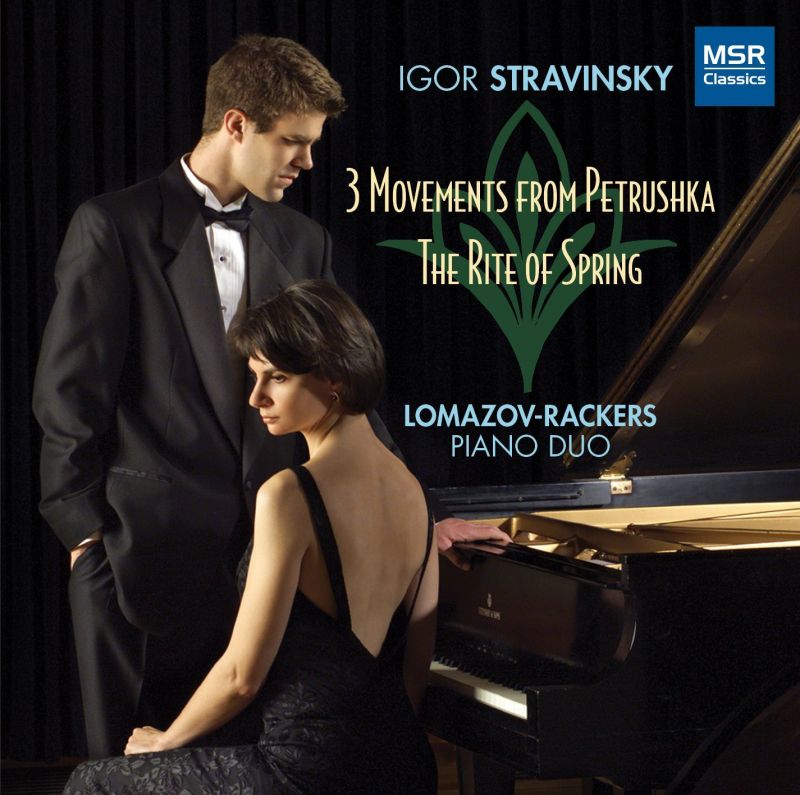STRAVINSKY The Rite of Spring (Piano Duo)
View record and artist detailsRecord and Artist Details
Composer or Director: Igor Stravinsky
Genre:
Chamber
Label: MSR Classics
Magazine Review Date: 01/2018
Media Format: CD or Download
Media Runtime: 48
Mastering:
DDD
Catalogue Number: MS1628

Tracks:
| Composition | Artist Credit |
|---|---|
| (The) Rite of Spring |
Igor Stravinsky, Composer
Igor Stravinsky, Composer Lomazov-Rackers Piano Duo |
| 3 Movements from Petrushka (Piano Duo) |
Igor Stravinsky, Composer
Igor Stravinsky, Composer Lomazov-Rackers Piano Duo |
Author: Jed Distler
Most duos find that the The Rite of Spring’s frequent hand crossings and other issues concerning congested fingering traffic can be circumvented by playing the work on two pianos rather than one. Lomazov and Rackers, however, opt for a single keyboard. This probably explains, in Part 1, why the Introduction and ‘Les augures printaniers’ are rhythmically square and dynamically constricted. Or why ‘Jeu du rapt’ lacks the scurrying lightness of Eden and Tamir’s wonderfully incisive recording (Decca, 6/70), or why the savage momentum of ‘Jeux des cités rivales’ never lets loose.
For whatever reason, Part 2 inspires more assured and centred pianism. The players avoid the easy temptation to milk ‘Cercles mystérieux des adolescentes’ and give welcome melodic shape to the chromatic runs of ‘Glorification de l’élue’. They bring balletic flow and lilt to the ‘Danse sacrale’ finale’s rhythmic asymmetry, while gracefully differentiating the Sostenuto e maestoso section’s interweaving ostinatos and flourishes (pesante, after all, does not mean percussive!). A few notes knocked out of tune in the process should be considered battle scars rather than production flaws. One could imagine more impact and fullness of body to the recorded sound yet a realistic concert-hall ambience still comes through.
Explore the world’s largest classical music catalogue on Apple Music Classical.
Included with an Apple Music subscription. Download now.

Gramophone Digital Club
- Digital Edition
- Digital Archive
- Reviews Database
- Events & Offers
From £9.20 / month
Subscribe
Gramophone Club
- Print Edition
- Digital Edition
- Digital Archive
- Reviews Database
- Events & Offers
From £11.45 / month
Subscribe
If you are a library, university or other organisation that would be interested in an institutional subscription to Gramophone please click here for further information.






